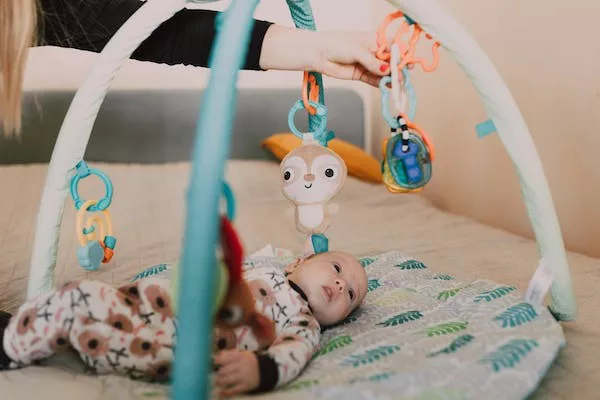Welcoming a new baby into the world is an exciting and joyous time for parents. As you prepare for your little one’s arrival, one essential item to consider is a cradle. A cradle provides a safe and comfortable space for your baby to sleep and rest. With a wide variety of cradles available on the market, it’s important to understand the different types and factors to consider when selecting the best cradle for your baby. In this comprehensive guide, we will explore various types of cradles, their features, and important considerations to help you make an informed decision.
Traditional Wooden Cradles:
Traditional wooden cradles evoke a sense of classic charm and elegance. They are often made from sturdy hardwoods, such as oak or pine, and feature a rocking or swinging motion. Here are some key aspects to consider:
a. Safety: Ensure the cradle meets safety standards, with sturdy construction, smooth edges, and a secure locking mechanism to prevent accidental collapses or injuries.
b. Rocking Motion: Traditional cradles provide a gentle rocking motion that can help soothe and calm your baby. Ensure the cradle’s rocking mechanism is smooth and stable.
c. Size and Portability: Consider the size of the cradle to ensure it fits comfortably in your bedroom or nursery. If you plan to move the cradle from room to room, look for lightweight options or those with wheels for easy portability.
d. Mattress and Bedding: Check that the cradle comes with a firm and supportive mattress that fits snugly. Additionally, select hypoallergenic and breathable bedding materials to promote a safe sleep environment.
Bassinets:
Bassinets are popular choices for newborns, as they offer a cozy and compact sleeping space. They are typically lightweight and portable, allowing you to keep your baby close by throughout the day. Consider the following when choosing a bassinet:
a. Safety Features: Look for a bassinet with a sturdy and stable frame, breathable mesh sides, and a firm mattress. Ensure it meets safety standards, such as ASTM International or CPSC guidelines.
b. Portability: Bassinets are designed to be easily moved from room to room. Consider features like wheels, foldability, and lightweight construction for convenient portability.
c. Adjustable Heights: Some bassinets offer adjustable height settings, allowing you to position the sleeping surface at a comfortable height for easy access to your baby.
d. Storage Space: Bassinets with built-in storage compartments or pockets can be beneficial for keeping essential items, such as diapers, wipes, and blankets, within reach.
Convertible Cribs:
Convertible cribs are versatile options that can adapt to your baby’s changing needs as they grow. They typically start as a crib and can transform into a toddler bed, daybed, or even a full-size bed. Consider the following when selecting a convertible crib:
a. Safety and Durability: Look for cribs that meet safety standards and have a solid construction. Check for adjustable mattress heights and ensure the crib slats are spaced appropriately to prevent entrapment.
b. Conversion Options: Consider the different conversion options available with the crib and whether they align with your long-term needs and preferences.
c. Style and Design: Convertible cribs come in various styles and finishes. Choose a design that complements your nursery decor and personal taste.
d. Mattress Support: Ensure the crib has a sturdy and adjustable mattress support system to accommodate the different stages of your baby’s growth.
Co-Sleepers:
Co-sleepers are designed to attach securely to your bed, allowing you to have your baby close while ensuring a separate sleep surface. They offer convenience for nighttime feedings and bonding. Consider the following aspects when choosing a co-sleeper:
a. Safety: Opt for a co-sleeper that attaches securely to your bed and has a stable frame. Look for models that meet safety standards and provide a clear separation between your bed and the co-sleeper.
b. Size and Adjustability: Ensure the co-sleeper’s height can be adjusted to match the height of your bed for a seamless transition. Consider the size to ensure it fits comfortably in your bedroom.
c. Ease of Access: Look for co-sleepers with a drop-down side or easy access panels, allowing you to tend to your baby without having to get out of bed.
d. Portability: If you plan to travel or move the co-sleeper between rooms, consider models that are lightweight and easy to disassemble and assemble.
Conclusion:
Choosing the best cradle for your baby involves considering factors such as safety, comfort, convenience, and your personal preferences. Whether you opt for a traditional wooden cradle, a bassinet, a convertible crib, or a co-sleeper, ensure that it meets safety standards, provides a comfortable sleep surface, and fits your lifestyle and nursery space. Remember to follow safe sleep practices, such as placing your baby on their back and avoiding soft bedding or loose items in the sleep area. By selecting the right cradle, you can create a cozy and secure sleeping environment where your baby can rest peacefully.


